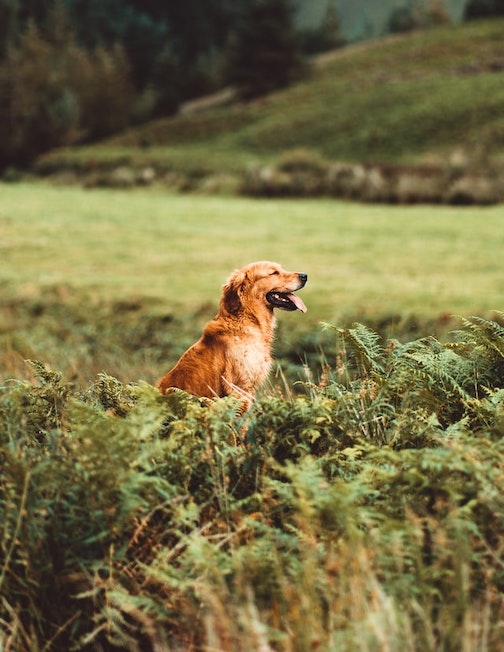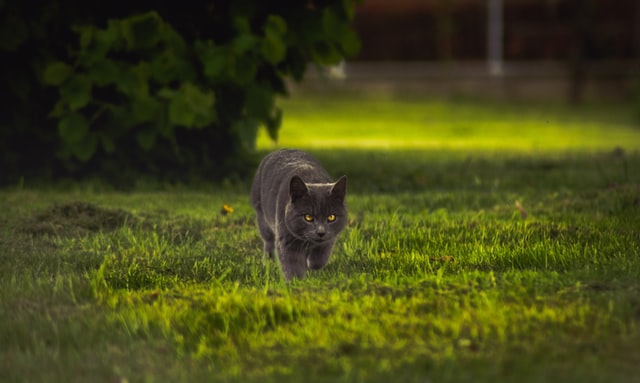5 Ways to be an Eco-Friendly Pet Parent
Posted: 11/06/2023 | BY: Erin Cain | Categories: Uncategorized
You are a pet parent who loves their dog or cat, and you are also someone who values the environment. Like many people, you are aware of the part we all play in climate change, and you may wonder what you can do to make a difference in the world right now. There are many small changes that all pet parents can make that can have a significant impact on the environment. Here are 5 easy ways to be an eco-friendly pet parent.

1. Use sustainable cat litter.
Many clumping cat litters contain clay, or sodium bentonite, which is non-biodegradable and causes environmental damage because it is pulled up through the ground, a process called strip mining. Deforestation, pollution, and destruction of habitats occur through the strip mining process. Additionally, clay litter, and others like it, end up in landfills where it will stay forever.
You can replace that damaging litter with greener options, such as recycled newspaper, sawdust, wood shavings, and mixtures of renewable tree-nut tops and fibrous materials. These eco-friendly litters are available online and at many chain and local pet stores. This small switch can make a big difference to the environment and to your cat’s health.
2. Buy planet-friendly pet food.
Our pets eat mostly meat-based diets; unfortunately, meat requires multiple resources to produce, causes pollution, and has a significant carbon footprint — and paw print — on the environment. You can reduce your part of this process by feeding your pets meat-based foods from grass-fed, organic, or sustainably raised animals. Pet foods with organ meat and animal bone are ideal both for the environment and for your pets. Giving your pets food with non-GMO grains is another way to help the environment and keep your pets eating healthier food.
Packaging is also a way you can contribute to bettering the environment. Look for pet food that is packaged with recyclable materials, and steer clear of non-recyclables that will only continue to add to landfills.

3. Keep your cat indoors.
Some cat parents let their kitties be indoor-outdoor cats because they believe that the cat will have a better quality of life if she can act upon her natural instincts. Sadly, those natural instincts are responsible for the deaths of 3.5 animals per month per cat. That “present” of a dead mouse or frog that your cat happily delivers to your door adds to the population decrease of the mammals in the immediate area. Multiply that by millions of outdoor domestic cats, and you can see the devastating impact cats can have on wildlife. Outdoor cats also kill roughly 2.4 billion birds a year, and their presence as a recognizable predator to birds impacts nearby nests by decreasing nest success and reducing the health of chicks.
The best solution to the wildlife damage is to keep your cat indoors. She will still have plenty of opportunity to fine tune her hunting skills with her toys and her cat parent. Your cat will be much safer indoors as well; many outdoor cats fall prey to predators, are hit by cars, or contract diseases and illnesses.
4. Compost your dog’s poop.
Dog feces can be a dangerous contaminator of nearby water sources. That dog poop pile that you didn’t use a bag to pick up is exposed to rain, and the water carries the pathogens within the feces into streams, lakes, ponds, and other water sources. The phosphorus and nitrogen in dog poop contributes to toxic algae outbreaks. Picking up your dog’s waste with a bag and tossing it into the trash isn’t the best environmental approach either.
Consider composting your dog’s poop. There are composters available for purchase, or you can make a DIY composter. Just remember that dog waste cannot be used as fertilizer, and if you have a food composter, keep it separate from the dog waste composter.
5. Purchase or create eco-friendly pet toys.
Many pet toys are made of sustainable materials, such as recycled rubber, hemp, and wood, and are available worldwide. Look for toys that are biodegradable when they get to the end of their lifespans. You can also make your own toys at home by using the materials you have around you. Cats are just as, if not happier, with a ball of foil as they are with the expensive toy you bought at the store; dogs are equally thrilled with rope toys and water bottle toys, both easy items you can make at home.
You and your pet can make a difference!
Through any of the above changes, you and your pet can have a positive effect on the environment and stop adding to the damage inflicted upon it. With a little effort and creativity, your carbon footprint and your pet’s paw prints will lessen with every passing year.
All pets can benefit from pet insurance. Does your pet need a pet insurance policy? Get a free, personalized quote, and protect your pet today.
References:
- https://natusan.co.uk/blogs/inside-scoop/cat-litter-and-the-environment
- https://www.scientificamerican.com/article/green-friendly-cat-litter-options/
- https://ourworldindata.org/carbon-footprint-food-methane
- https://www.dailypaws.com/cats-kittens/cat-safety-tips/indoor-vs-outdoor-cats
- https://blog.scienceborealis.ca/the-effects-of-outdoor-domestic-cats-on-wildlife/
- https://abcbirds.org/program/cats-indoors/cats-and-birds/
- https://blogs.umass.edu/natsci397a-eross/the-environmental-and-health-impacts-of-allowing-cats-outdoors/
- https://www.solitudelakemanagement.com/blog/pick-up-your-pets-waste-its-polluting-our-lakes-ponds/
- https://thebark.com/content/build-your-own-pet-waste-digester
- https://www.greenmatters.com/p/eco-friendly-dog-toys
- https://www.dogsnaturallymagazine.com/create-your-own-environmentally-friendly-recycled-dog-toys/
Disclaimer
The information contained on this blog is intended for informational and educational purposes only and should not be construed as medical advice. It is not a substitute for professional veterinary care. Always consult with your veterinarian before making any changes to your pet's health care or treatment plan.
The authors of this blog are not veterinarians and do not claim to be experts in pet health. The information provided here is based on our own experiences and research, as well as information from reputable sources. However, we cannot guarantee the accuracy or completeness of this information.
We encourage you to do your own research and consult with your veterinarian before making any decisions about your pet's health.
Previous post
How to Determine Your Cat’s Scratching StyleCompare top pet insurance providers plans.
Enter your dog’s age in years and months to calculate their age equivalent to human years.
Calculate your dog’s ageEnter your cat’s age in years and months to calculate their age equivalent to human years.
Calculate your cat’s age